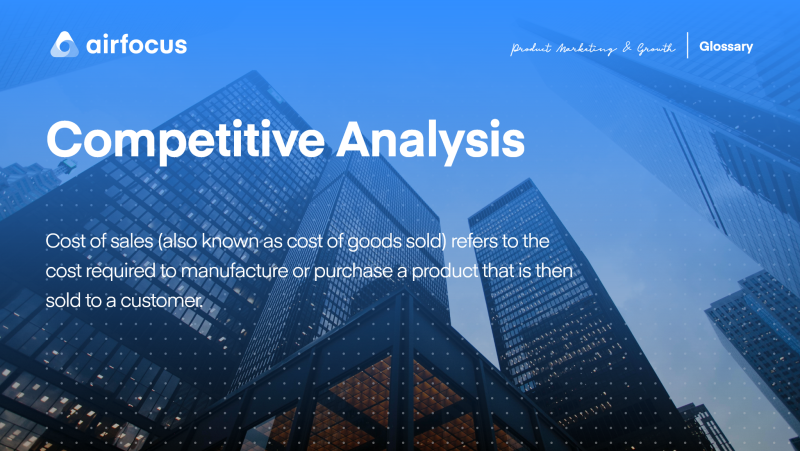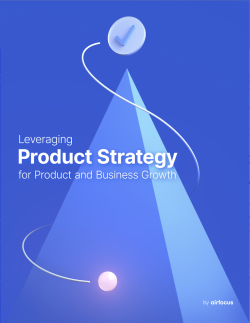Competitive Analysis
What is competitive analysis?
Definition of competitive analysis
Competitive analysis is the process of identifying competitors and evaluating their strategies in order to determine their weaknesses and strengths in order to better your own company.
As the name states, competitive analysis is simply analyzing your competitors in order to better your own company and refining your competitive advantage.
How do you write a competitive analysis?
The idea of a competitive analysis is to get an overall picture of your competitors and use that information to gain an advantage.
When it comes to how to write a competitive analysis, look at covering the following:
Their target market
Their product features
Market share and revenue
Marketing and social media strategy
Customer ratings
… and anything else that gives you an insight into how they operate and how they win customers.
Much of this information will be easy to find via their website and social media but some of it might require a deeper search as well as getting out into the market to interview potential customers.
You’ll then use this information to make informed decisions about where your product will be on the market without copying what somebody else does.
What are the 6 steps of competitive analysis?
You can approach your competitive analysis in whatever way makes sense for your business. That said, there are 6 steps of competitive analysis that most methods follow:
Competitor overview
Pick out five to ten competitors that you can analyze. It’s recommended you choose a mixture of newer and established businesses that offer a similar product to what you will. Think about the target markets you’re aiming for too, and pick competitors across markets.
Start your market research
Now it’s time to dive right into research, using a mixture of primary and secondary market research.
Primary research gathers insights from customers, via focus groups, online surveys, or by purchasing a competitor’s products for a company-wide research program.
Secondary research gathers information that already insists. Look on each competitor’s website and social media, customer feedback, and reputation — as well as any market data provided by big research firms.
Look at product features
Now is the time to compare your product to theirs. By looking at them side by side, there may be some obvious differences in terms of design, experience, and feature set. But you should also look at monthly active users (if you can find that data), how they manage customer feedback and updates, what their price positioning is, and so on. What can you do similarly or differently to each of them to make your product stand out?
Compare marketing
You may have had a quick look on their website and social media but now is the time to take a deeper dive. You can also look at press releases, paid ads, and product descriptions to get an overall feel for their brand and what their value proposition is.
What is their tone of voice? Do they have high engagement with their customers? Can you tell what their company mission is from their copy and content?
Set up SWOT analysis
With all of this analysis, it’s now time to analyze your own company in a SWOT analysis. What strengths and weaknesses do you currently have? Are there any significant opportunities or threats? Then the idea is to work on these negatives to ensure you stand out from your competitors.
Establish your market standing
Now the planning and research are over, it’s time to take action and get set up before launch.
Decide where in the market you will place your product. Will you offer an introductory price for new customers? Will you offer different pricing tiers for different feature sets If you’re building a SaaS, how will you reward loyalty? Are you at the lower end of the market or do you consider your product more premium? These should be questions asked before a launch and decided before you take the product to market.
Advantages of competitive analysis
Just as we mentioned above, this information and data is being gathered so that you can use it for your own advantages. Knowing the weaknesses of your competitors (something like bad customer service) can help you attract frustrated customers in the future.
But more than that, there are plenty of reasons why you should be doing frequent competitive analysis:
Get benchmarks to help you measure your own success and growth.
Improve your brand by capitalizing on their weaknesses and building on their strengths.
Discover new market areas that aren’t covered by any competitors.
There are loads of reasons any business should be doing a competitive analysis. Perhaps the best reason of all is to simply know what you’re up against.
Who uses competitive analysis?
Truthfully, all businesses should be conducting competitive analyses. As long as you have competition, you have a use for competitive analysis.
Competitive analysis example
Depending on the industry, an analysis can be very different. For this example, we’re going to use a generic SaaS. There are a few things that you could easily track in order to have the upper hand:
Site loading speed
Loading speed is incredibly important. Customers sometimes won’t tolerate even the slightest hiccup.
Understanding how many people visit their main site each day is incredibly valuable.
Traffic sources
Where is this traffic coming from? What works well for them might very well work for you, too.
There are a number of simple metrics you can track through the competitive analysis that will give you very useful data.

General FAQ

Glossary categories
Create effective product strategy

Experience the new way of doing product management








